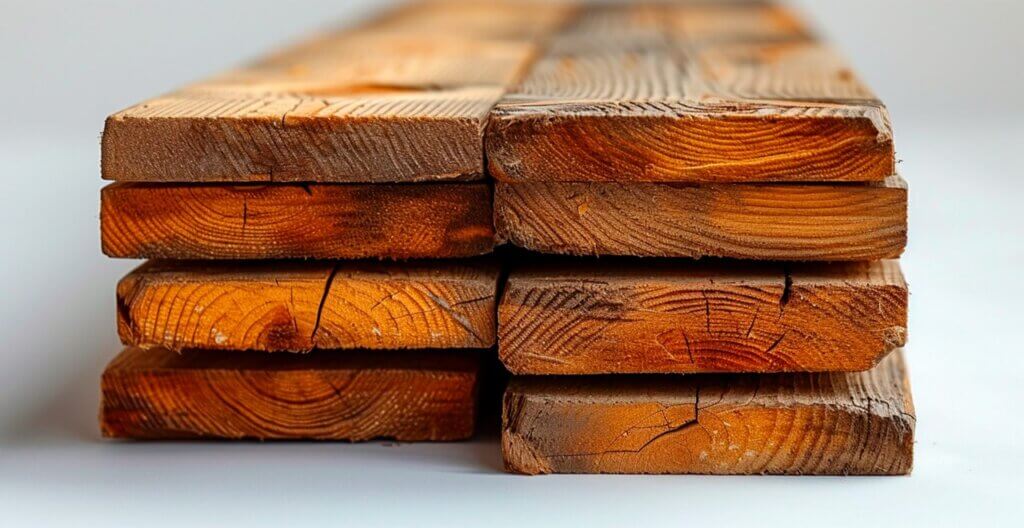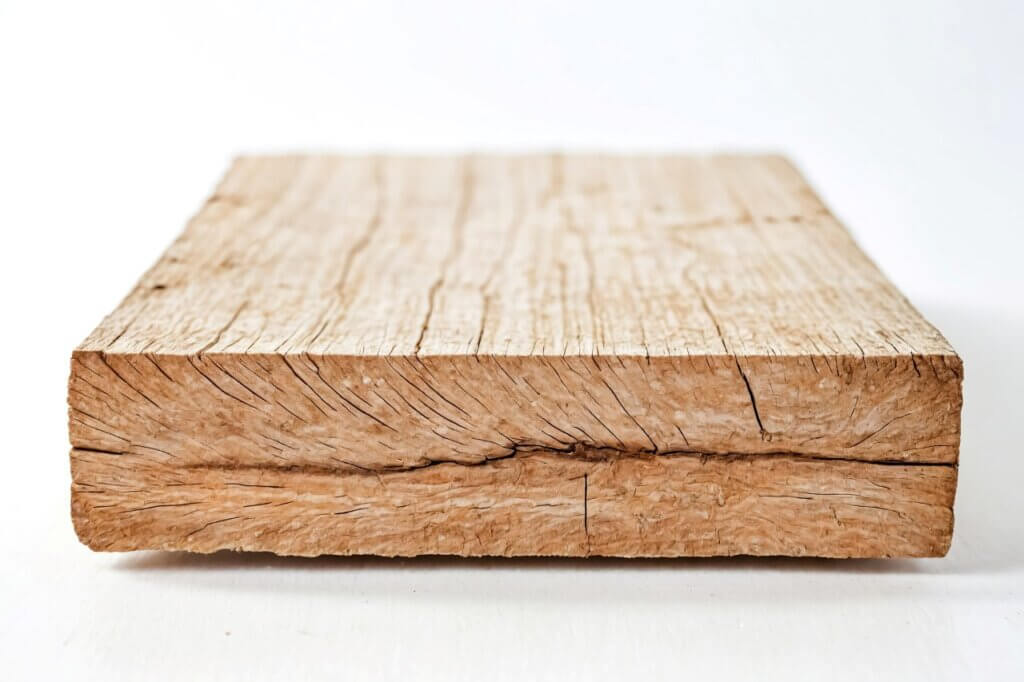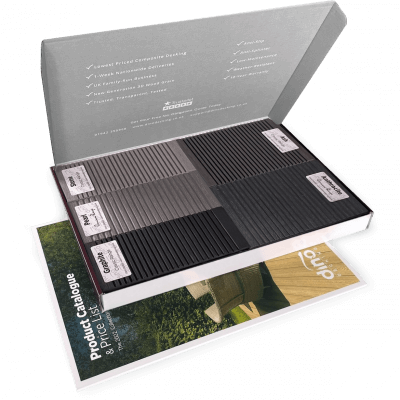10 Unique Ways to Use Interior Cladding
You’re probably aware that cladding can be a smart and practical covering for the exterior of a house, but did
Products in Stock
Lowest Prices
Express Delivery
10-Year Warranty
December Sale. Up To 15% Off.

Ever found yourself staring at piles of fence panels at the garden centre, wondering what’s actually different about the treated and untreated options? Well, the choice between these two types of wood isn’t just about picking a colour or finding the cheapest option—it’ll determine how your fence holds up through rain, shine and everything in between.
Simply put, treated wood has been processed with preservative chemicals that protect it from the elements. But there’s more to it than just a quick dip in some chemicals.
The wood gets placed in massive pressure chambers where preservatives are forced deep into its structure—not just on the surface. This thorough process is what gives treated wood its characteristic resistance to rot and pests.
Most timber yards use copper-based preservatives these days. The older arsenic-containing treatments fell out of favour years ago due to health concerns, thankfully. Each treatment leaves its own distinctive mark on the wood’s appearance and performance.
You’ll spot treated wood by its greenish or brownish tint. The shade varies based on the chemicals used and concentration. Left to weather naturally, it fades to a soft grey, though you can always slap on a stain if that’s not your cup of tea.
Untreated wood is exactly what it sounds like—timber without added chemicals. It’s wood as nature intended, for better or worse.
Cedar and redwood have earned their reputation in the fencing world because they contain natural oils that fight off rot and bugs without human intervention. Other species aren’t so lucky in the self-preservation department.
Farmers and homeowners have used untreated wood for centuries. Those charming countryside fences with wonky posts? Mostly untreated wood that’s been replaced every few years as needed.
When untreated wood eventually gives up the ghost, it breaks down naturally. No chemicals leach into your garden soil—something worth thinking about if you’ve got kids, pets or vegetables growing nearby.
Beyond the obvious green tint, these materials behave completely differently once they’re standing in your garden.
Here’s where treated wood shines. A properly installed treated fence might still be standing when your toddler heads off to university. Untreated wood? You might be replacing sections before you’ve even paid off the initial project.
British weather isn’t exactly gentle on outdoor wood. Treated timber shrugs off our notorious rain while untreated wood soaks it up like a sponge, leading to warping and splitting after a few soggy seasons.
Wood-boring insects and fungi view untreated wood as an all-you-can-eat buffet. They’ll typically give treated wood a miss, heading next door to feast on your neighbour’s untreated fence instead.
Every choice involves trade-offs, and fencing materials are no exception.
The obvious winner here is longevity. Install it properly and you might forget you even have a fence to maintain for years at a stretch.
You’ll also spend less time on upkeep. A quick annual check and perhaps a clean is all that’s needed—no desperate weekend scrambles to replace collapsed sections after autumn storms.
Let’s talk about the elephant in the garden—those treatment chemicals. Modern versions are safer than their predecessors, but some homeowners still prefer to avoid them, particularly in family spaces or vegetable patches.
Your wallet takes a bigger hit upfront too. The treatment process adds to the cost, though you’ll likely save money over time through fewer replacements.
Natural wood has its place in the fencing world for good reason.
Nothing beats the look of natural wood. Its grain patterns and warm tones develop character as they age—something that appeals to many homeowners seeking a rustic garden feel.
The price tag is much friendlier too. When you’re fencing a large area on a tight budget, those savings add up quickly.

Hope you enjoy DIY projects, because you’ll be doing plenty of them. Untreated wood demands regular attention—sealants, stains, and eventual replacement become part of your seasonal routine.
What you save at purchase, you’ll likely spend later in maintenance and early replacement. Worth checking out our modern fencing solutions for homes at Dino if ongoing maintenance sounds like your idea of weekend hell – composite is incredibly low maintenance and drama-free.
Some situations practically beg for treated timber.
If your garden sees more rain than sunshine (hello, British weather), treated wood makes sense. Areas with high humidity or frequent temperature swings will destroy untreated wood in record time.
Any wood touching soil—fence posts being the obvious example—should always be pressure-treated. Untreated posts can rot through in a single damp season, leaving your fence panels hanging sadly in mid-air.
Building a boundary fence you want to outlast your mortgage? Treated wood is your friend. The initial investment pays dividends through years of trouble-free service.
Untreated wood isn’t always the wrong choice—it depends on your specific needs.
Putting up a temporary fence to keep the dog in while training? Or sectioning off part of the garden for a couple of summers? Untreated wood might be perfectly adequate and save you money.
Garden room dividers or decorative indoor screens don’t face weather challenges, making untreated wood a sensible option for these protected environments.
If you’re using naturally durable woods like cedar in a relatively sheltered spot, you might get acceptable performance without chemical treatments. The natural oils provide some protection, especially with regular maintenance.
Your perfect fence depends on your garden, your budget and how much maintenance you’re willing to take on. Treated wood gives you longevity and weekends free from fence repair. Untreated wood offers natural beauty and a lower initial price tag, but demands your time and attention.
Installation quality matters just as much as material choice. Even the most expensive treated panels will fail if badly installed, while properly mounted and maintained untreated sections might surprise you with their lifespan.
And for those wondering: is composite fencing better than wood? We’d have to say yes – it offers durability without the maintenance wood requires. And no we’re not totally biased!
Whichever way you go, remember that your fence does more than mark boundaries—it frames your outdoor space and contributes to your home’s overall impression. Choose wisely, install properly, and you’ll have a garden feature that serves you well for years to come.

Our sample pack contains a sample piece of each colour currently available. Order your free sample pack today to compare the colours and get a true feeling of the Dino Decking range!
You’re probably aware that cladding can be a smart and practical covering for the exterior of a house, but did
With winter approaching, you might be wondering how to heat a shed to keep it cosy and welcoming all year